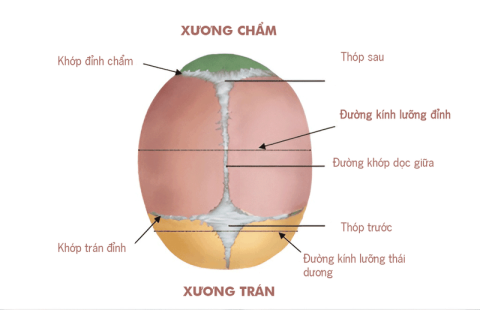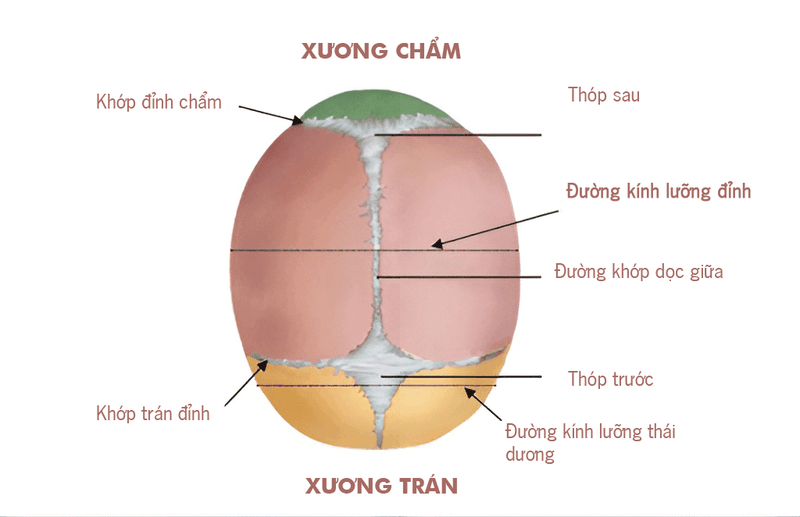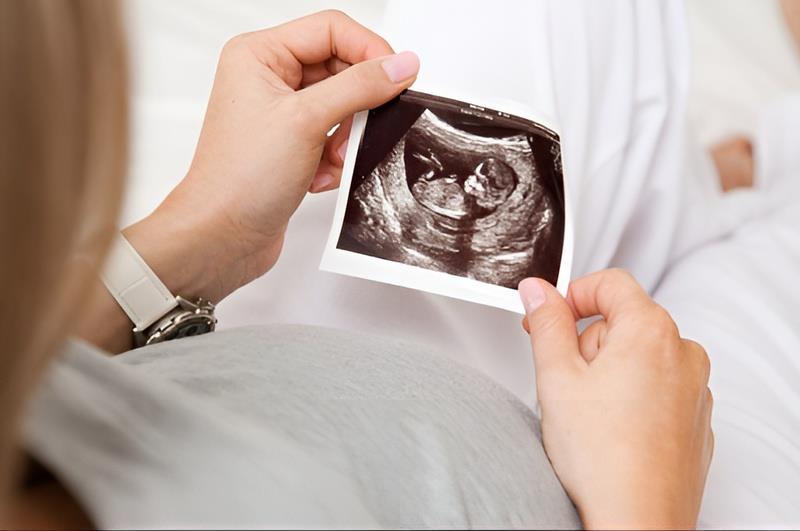Biparietal diameters and things to know

During pregnancy, most pregnant women wonder if their baby will grow up healthy? In order to obtain information about height, weight, and gestational age, biparietal diameter is one of the important indicators expressed in ultrasound results. This parameter helps to accurately assess the development of the fetus, so it should be noted by pregnant women.
In fetal ultrasound results, biparietal diameter is a very important indicator. This parameter can help doctors determine if the child's growth is normal. At the same time, predict the weight and size of the baby at birth.
What is the bicuspid diameter?
Biparietal diameter (abbreviated as BPD) is the cross-sectional diameter of the fetal skull measured from the forehead to the back of the neck. You can also understand this the largest head diameter of the baby in the belly.
In fetal ultrasound, biparietal diameter index is used to estimate fetal weight, calculate gestational age, and evaluate fetal growth rate and is considered an important parameter in the fetal index table .

Biparietal diameter is used to calculate gestational age to assess fetal development
Reasonable time to measure the biparietal diameter
Usually, doctors will measure the fetal biparietal diameter using an ultrasound machine. Then, the BPD index was determined from the outer surface of the upper plate extending to the inner surface of the lower plate.
Experts recommend that the biparietal diameter index should start measuring from the 13th week of pregnancy until about 20 weeks gestation, then stop. At this time, the index usually only deviates within 10-11 days. If you miss the above precious period and wait until the 26th week of pregnancy to measure the BPD index, the accuracy will no longer be high and the error may be up to 3 weeks. Cause and because the fetus's head is developing very fast at this time.
Note, biparietal diameter and fetal head circumference are two completely different parameters. Biparietal diameter indicates the diameter of the baby's head, and head circumference is the measurement of the circumference of the baby's head.
Biparietal diameter and fetal head circumference are two different parameters
What is the normal BPD biparietal diameter?
According to research, from the time the fetus is 12 weeks old to the time it is born, the average biparietal diameter of the baby will increase from 2.5cm to 9cm. Pregnant women can refer to the relative BPD index below:
- 13-15 weeks of pregnancy: The fetus has a biparietal diameter of about 21-29 mm.
- 16-18 weeks of pregnancy: The fetus has a biparietal diameter of about 32 - 39 mm.
- 19-21 weeks of pregnancy: The fetus has a biparietal diameter of about 43 - 50 mm.
- 22-25 weeks gestation: The fetus has a biparietal diameter of about 53-62 mm.
- 26-28 weeks of pregnancy: The fetus has a biparietal diameter of about 65-71 mm.
- Week 29-31: The fetus has a biparietal diameter of about 73-78 mm.
- 32-34 weeks: The fetus has a biparietal diameter of about 81-85 mm.
- Week 35-37: The fetus has a biparietal diameter of about 87-90 mm.
- 38-40 weeks gestation: The fetus has a biparietal diameter of about 92-94 mm.
You can refer to 12 weeks pregnant with abdominal ultrasound or transducer to have the best choice for your plan or obstetric examination.
Is the standard deviation BPD biparietal diameter a concern?
If the fetus has a biparietal diameter index that is not within the normal range, the doctor will order the pregnant mother to have another ultrasound. At the same time, conduct in-depth tests and examinations to find out for sure about the health of the baby.
In case the BPD index is smaller than normal, there is a possibility that the fetus has growth retardation or the head of the fetus is flatter than normal cases.

Doctors will assign pregnant women more ultrasound if the biparietal diameter index is different from the standard level
In contrast, a larger than normal biparietal diameter means that the fetus has a large head. This makes it difficult for women to give birth naturally, especially for first-time mothers. In addition, the biparietal diameter and other indicators are above the normal range, it is likely that the pregnant mother is suffering from gestational diabetes. Caesarean section at this time is the recommended method to ensure safety for both mother and baby.
Measures to help the fetus have a standard biparietal diameter index
How to get the fetus with normal biparietal diameter is a common question of most pregnant women. It should be noted that this is influenced by many different factors and to get the ideal BPD index requires pregnant women to have a reasonable diet, activity and exercise. Here are some suggested methods to maintain the standard biparietal diameter index for reference:
- Nutritional supplements: A standard diet for pregnant women needs to ensure a balanced daily meal of groups of substances: Protein, carbohydrates, fats, vitamins and minerals. In addition, pregnant women need to pay attention to supplement iron, zinc, calcium... in a reasonable way to provide all the necessary substances for the development and perfection of the fetus's body.
- Increase moderate and gentle exercise: Every day, pregnant women should spend 15 - 30 minutes to perform movements and do gentle exercises. This helps to significantly improve constipation and leg edema while promoting blood circulation for both mother and baby.
- Reasonable rest: Besides exercise and strength, pregnant women need to get enough rest, go to bed early and get enough sleep to significantly reduce stress and tension.
- Tetanus vaccination: To prevent the risk of infection at birth for both mother and baby, tetanus vaccination is very necessary. Mothers should be vaccinated when the pregnancy is full 20 weeks or more and should be noted: Complete 2 doses, the interval between 2 doses is at least 1 month and the 2nd injection must be given at least 1 month before the time of delivery.
- Periodic examination: To monitor the mother's health and the development of the fetus, pregnant women need to have regular antenatal check-ups as indicated. Important antenatal check-up milestones that mothers must not forget are: When the fetus is 12-14 weeks, 20-24 weeks and 30-32 weeks of pregnancy.
Regular check-ups will help pregnant women monitor the biparietal diameter index
Above is the information about the biparietal diameter index pregnant women need to know and note. The BPD index has a very important role in determining the fetal weight, estimating gestational age, the development of the nervous system as well as the development of the fetus. Therefore, pregnant women should not miss the important antenatal check-ups to update the BPD index to detect abnormalities (if any) of the baby in the womb.